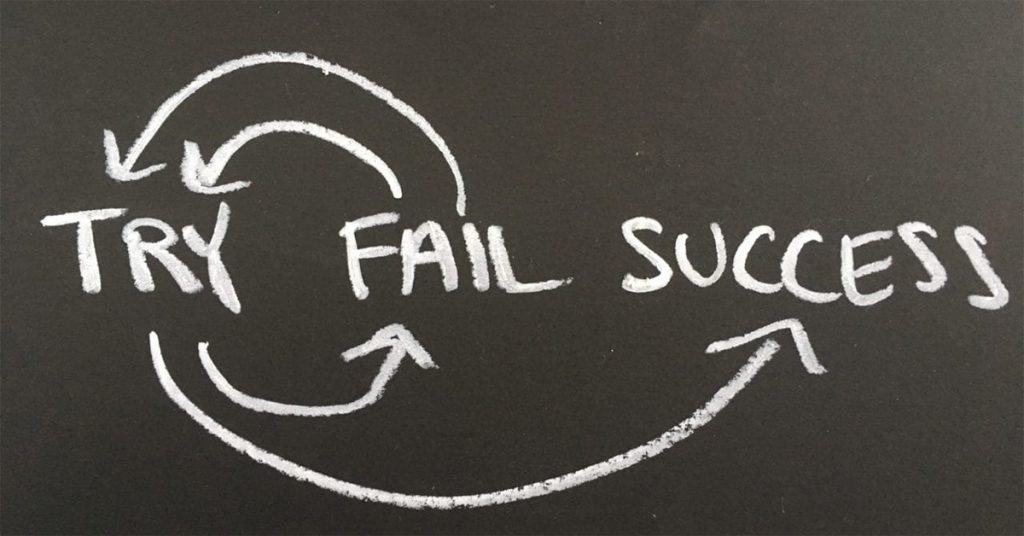
The Unconscious Mind – What is the Unconscious?
The unconscious mind has long been shrouded in mystery, but psychology and neuroscience are making great progress to reveal the science behind non-conscious mental processes

Our site features affiliate links. If you buy through them, we earn a commission at no extra cost to you. Thanks for your support!
Like many of you, I’ve found myself wading through an endless sea of self-help literature, much of which promised the world but delivered little beyond feel-good slogans—yes, even the charismatic Tony Robbins isn’t immune to this critique.
Amidst the fluff, there were indeed some diamonds in the rough, but uncovering these treasures meant navigating a maze of mediocrity.
This very challenge sparked the inspiration behind this website: a quest for self-enhancement rooted in scientifically-backed methods that lead to authentic, tangible transformations.
In response to this quest, I’ve curated a list of the top five self-improvement books, each a beacon of practical wisdom. These selections are for those among us who yearn for books not just filled with theory but brimming with actionable guidance that can be seamlessly integrated into our daily lives for real, observable progress.
Remember, genuine success is a marathon, not a sprint, and is built on the foundation of small, consistent actions over time. Anyone suggesting a quick fix is likely missing the essence of true growth.
So, let’s dive into these five transformative self-improvement books, designed for anyone, at any life stage or career phase. Your journey towards self-improvement is limited only by your dedication to consistent effort and the willingness to embrace small, daily enhancements.
Even if you’ve never read it, there’s a good chance you’ve heard its name. When a book becomes globally renowned by title alone, it’s a clear sign of its remarkable impact and quality.
Born in poverty on a farm in Missouri, author Dale Carnegie went on to become one of the most influential figures in the field of personal development. His most famous book, “How to Win Friends and Influence People,” was first published in 1936 but has remained a bestseller to this very day.
What makes this book a lifetime legend is its easy-to-follow format. Each short chapter represents one skill or trait that can be put into practice straight away, with immediate benefit.
Most of the value of the book for the average reader comes in the first two sections.
The first is named “Fundamental Techniques in Handling People” which teaches three key rules for dealing with people:
They may sound simple, but Carnegie’s anecdotes and stories help visualize these principles in action and lead us to remember similar situations where we may (or may not) have used them in our personal experiences.
The second section focuses on “Ways to Make People Like You”.
As you can see, getting people to like you isn’t about playing mind games or being manipulative; it’s just about seeing things from their perspective. Think about what would make you feel good if you were in their shoes.
Showing genuine interest in someone else and chatting about what they’re into can help you get what you’re after, but it also makes things better for them too. It’s a total win-win. When everyone’s happy and getting something good out of the deal, you’re more likely to have positive interactions further down the line.
The rest of the book focuses on “How to Win People to Your Way of Thinking”, particularly useful for salespeople or those who must negotiate frequently.
There are 12 rules here, but the most pertinent is the first: “The only way to get the best of an argument is to avoid it”. As Carnegie brilliantly quotes, “You can’t win an argument; you can’t because if you lose it, you lose it; and if you win it, you lose it.” In other words, you may be technically correct, but when the other person is defeated and upset, they will never do business with you again, so you lose by default.
How to Win Friends and Influence People is a longtime classic for a reason; its advice is timeless. Although many of the anecdotes and stories now feel antiquated, people, and their feelings, remain the same.
Check out How to Win Friends and Influence People on Amazon.
Habits are the foundation of success. Good habits performed consistently will ensure success remains a matter of when, not if. Bad habits, however, will prevent you from ever building any momentum, keeping you unproductive and unmotivated.
Thank goodness, then, that author James Clear has blessed us with his legendary book “Atomic Habits”, where he transforms the concepts of habits into an easy-to-follow process.
The book is structured around four main principles, which are designed to create a framework for developing a system of habits that work for you.
Firstly, make your habit obvious. Focus on the cues of your habits and be mindful of the triggers that prompt your behaviors. To build a new reading habit, for example, find a quiet and comfortable area to initiate your habit.
Clear suggests planning your habits with the formula: “I will [BEHAVIOR] at [TIME] in [LOCATION].” This specificity acts as a clear cue for your actions.
Secondly, make your habit attractive. The more attractive an opportunity is, the more likely it is to become habit-forming. James Clear emphasizes utilizing temptation bundling—pairing an action you want to do with an action you need to do.
We are also more likely to adopt habits that are approved, practiced, and valued by our social groups, so surround yourself with people who have the habits you want to develop.
The third and fourth steps are to make the habit easy and satisfying. When starting a new habit, for example, it should take less than two minutes to do, helping to establish the habit before making it more complex.
On a final note, James Clear leaves us with the 1% Rule, where small improvements add up over time. By aiming for just a 1% improvement each day, the effects compound, and these small changes will lead to significant transformations.
“Man’s Search for Meaning” by Viktor E. Frankl is a profound book that hits the emotional core like no other, leaving the reader with a new outlook on what motivation and meaning look like at the extremes.
“Man’s Search for Meaning” is a powerful memoir about Frankl’s time in a Nazi concentration camp, chronicling his experiences as a prisoner and how, after unimaginable suffering and loss, he found a strong enough meaning to endure his hardships where others perished.
Frankl argues that life has potential meaning under any circumstances, even the most unimaginable and miserable. How a person accepts their suffering and finds meaning in it makes a significant difference in their overall well-being.
This notion was evidenced by a friend of Frankl’s, who believed he would be released on a specific date. Once this date came and went, however, and the realization that he would not be released dawned upon him, his health nosedived, and he shortly passed away.
Frankl eloquently sums this up: “Even though conditions such as lack of sleep, insufficient food, and various mental stresses may suggest that the inmates were bound to react in certain ways, in the final analysis, it becomes clear that the sort of person the prisoner became was the result of an inner-decision and not the result of camp influences alone. Fundamentally then, any man can, under such circumstances, decide what shall become of him – mentally and spiritually.”
Where most self-improvement books focus on the technicalities of procrastination or productivity, which are certainly worthwhile, very seldom does a book take you into the deepest fundamentals of motivation and emotional drive.
Man’s Search for Meaning will leave you asking yourself questions such as: why do you want to improve? What endeavors are most important to you? What motivations can you hold close to you to overcome the inevitable setbacks and hardships you will face?
Frankl emphasizes that individuals always have the freedom to choose their attitude toward their circumstances, no matter the physical or psychological constraints. By answering these questions honestly and deeply, you will provide yourself with the best information to navigate these choices.
Check out Man’s Search For Meaning by Victor E. Frankl on Amazon.
This is the book that started my entire journey into the science of self-improvement. “The Chimp Paradox” by Dr. Steve Peters explains how our brains are wired and why we all suffer from negative thoughts that often stop us from bettering ourselves, hence the paradox.
“The Chimp Paradox” walks us through a powerful mind management model that aims to help individuals understand and manage their emotions, thoughts, and behaviors more effectively.
The book introduces the concept of the mind being comprised of three main parts: the Human, the Chimp, and the Computer, all of which have unique traits that we must learn to use to their specific advantages.
The Chimp is your emotional thinking machine, responsible for instincts, impulses, and gut reactions. It’s not good or bad, but it’s often irrational and driven by feelings.
The Human represents your logical thinking machine, responsible for facts, truth, and rational thinking. For example, the Chimp will instinctively push the feeling that you are hungry (you cannot control feeling hungry), whereas the human will think about what specific foods it wants to eat.
Finally, we have The Computer, your automatic functioning machine, storing information and habits out of sight that can be used by either the Chimp or the Human to make decisions.
Dr. Peters offers three strategies for managing the Chimp and its unwanted emotional thoughts.
Firstly, we have to recognize when the Chimp is in control. Learn to distinguish between thoughts and feelings generated by the Chimp versus those from the Human.
Secondly, manage your Chimp. Instead of trying to eliminate emotions or impulses, learn to manage them through techniques such as exercises, reflection, and perspective shifts. Many of the Chimps’ thoughts are instinctual, such as taking offense to someone laughing at you, so instead of dwelling and taking it personally, accept that it is a natural reaction and put in place ways to manage it.
Finally, nurture your Chimp. Understand and address your Chimp’s basic needs to prevent unnecessary stress or emotional responses. Instead of feeling guilty for succumbing to road rage, consciously tell your Chimp that it’s a perfectly healthy and natural thought, but that you don’t have to act upon them.
The rest of the book focuses on ways we can utilize this mind management model in everyday circumstances, such as developing self-awareness and happiness, improving communication and relationships, and stress management. Since emotion drives almost every decision to some degree, it makes sense that we should learn to recognize and manage it in all of these aspects.
Dr. Peters’ model offers a framework for understanding the complexities of human behavior and emotions. By recognizing the roles of the Chimp, the Human, and the Computer, individuals can work towards achieving a balanced mind, leading to improved decision-making, stronger relationships, and greater overall well-being.
“The War of Art” is written by a fiction author who grapples with the same challenge that confronts us all: the battle to engage in meaningful work and achieve significant accomplishments. This struggle is termed resistance, a seemingly overwhelming force that we all encounter daily.
Author Steven Pressfield articulates that we lead dual lives: the existence we currently embrace, which for many is a life filled with fear and dread and the potential life that remains unexplored within us. The barrier separating these two is resistance.
Inherently, humans possess a creative spark that has propelled us to remarkable achievements, while also establishing our supremacy as the dominant species. Each individual has a unique contribution or innovation to offer the world, yet a vast majority are hindered by their inability to surmount this resistance.
This mysterious force of resistance is ingrained inside us as a safeguard against risk. While this might seem paradoxical, concepts like the negativity bias are biologically designed to restrain us from exposure to risk and danger.
For example, if you hear a strange noise in your house at night, your immediate reaction is likely to be alertness or fear, considering it might be an intruder, rather than assuming it’s something harmless.
This instinctual focus on potential threats has evolved to help humans survive by preparing them to respond quickly to danger, ensuring that they err on the side of caution in potentially life-threatening situations.
Our primitive brain, however, fails to differentiate between physical threats, like those our ancestors might have encountered, and contemporary challenges, such as the failure of a business venture. Although we understand that a business failure isn’t catastrophic and that we need to expose ourselves to some financial risk to reap and reward, our primal brain does not recognize this distinction and tries to shut it down.
Resistance, therefore, is an evolutionary defense mechanism that once ensured our survival but now impedes our prosperity.
Pressfield states that resistance commonly manifests itself as self-doubt and pessimism. For instance, when contemplating starting a business, resistance swiftly convinces you of the difficulties and the extensive learning curve involved.
Resistance also compels us toward immediate gratification, as the subconscious mind and the amygdala prefer the instant reward and the resultant dopamine surge over the long-term satisfaction of future success, despite the interim hardships.
He also states that failure to acknowledge and address resistance can lead to bitterness and a sense of unfulfillment.
To conquer resistance, the first step is to accept it. Since it is a biological function, we can no more halt it than we can stop breathing. Instead, we must learn to thrive alongside it by recognizing when it’s at play and deliberately navigating through it.
Pressfield suggests that the presence of resistance is actually a positive indicator of motivation and passion; intense emotions are reserved for matters of true concern. The greater the resistance felt, the higher the potential for success.
If a project doesn’t stir a fear of failure, it likely doesn’t hold much importance to you. For entrepreneurs brimming with ideas, the optimal choice might be the one that excites and intimidates you the most.
After acknowledging resistance, the next step is to confront it directly. Pressfield’s strategy to overcome his resistance to writing, for example, is to start writing at 10:30 am and continue for as long as possible. His aim isn’t focused on the number of pages or quantity of words but on the effort of “putting in my time and giving it everything I’ve got.”
He notes that after a few hours of writing, resistance diminishes, and the task becomes more manageable, albeit just for the day. Facing the same challenge anew each day, he perseveres through the process, ensuring progress is made.
If I could start over my self-improvement journey anew, these are the five books I would start with immediately. They provide a mix of motivational and technical guidance, serving to both ground yourself in the context of fundamental human motivations, while also providing the technical skills and tools needed to capitalize on your newly found motivation.

The unconscious mind has long been shrouded in mystery, but psychology and neuroscience are making great progress to reveal the science behind non-conscious mental processes

Success stems from many small wins compounded over time – the key to this is consistency, which is achieved though the use of strong habits.

Psilocybin can help treat mental health by altering neural connections, reducing activity in parts of the brain causing anxiety, allowing new healthier connections to form.

To master emotions, and improve emotional control, we first need to understand the science behind them.

Humans are unpredictable by nature, so boosting our social skills is one of the strongest weapons we can use for successful communications. Here are 3 of the best books on social skills.

Learning from failure is nature’s most efficient learning mechanism, yet as adults, we try to avoid failure at all costs. Instead, we should learn how to fail the correct way.
© 2025 Modern Mind Masters - All Rights Reserved
You’ll Learn:
Effective Immediately: 5 Powerful Changes Now, To Improve Your Life Tomorrow.
Click the purple button and we’ll email you your free copy.